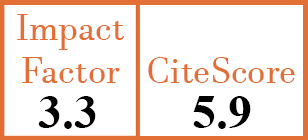Full Papers
COVID-19 in rheumatoid arthritis: prevalence, hospital admission, and risk of all-cause mortality before and after COVID-19 pandemic
M. Movahedi1, X. Li2, A. Cesta3, C. Bombardier4, E. Hepworth5, S.Z. Aydin6
- UHN, Toronto General Hospital Research Institute, Toronto, and Institute of Health Policy, Management, and Evaluation (IHPME), University of Toronto, Canada.
- UHN, Toronto General Hospital Research Institute, Toronto, Canada.
- UHN, Toronto General Hospital Research Institute, Toronto, Canada.
- UHN, Toronto General Hospital Research Institute, Toronto; Institute of Health Policy, Management, and Evaluation (IHPME), University of Toronto; and Department of Medicine, University of Toronto, Canada.
- Ottawa Hospital Research Institute, Ottawa; and University of Ottawa, Ontario, Canada.
- Ottawa Hospital Research Institute, Ottawa; and University of Ottawa, Ontario, Canada. saydin@toh.ca
on behalf of the OBRI investigators
CER18756
Full Papers
Free to view
(click on article PDF icon to read the article)
PMID: 40892632 [PubMed]
Received: 25/03/2025
Accepted : 04/06/2025
In Press: 29/08/2025
Abstract
OBJECTIVES:
COVID-19 infection can trigger a cytokine storm, treatable with immunomodulating therapies similar to those used in rheumatoid arthritis (RA). This study investigated COVID-19 prevalence, hospitalisation, emergency department (ED) visits, and the impact of RA treatment and baseline characteristics on mortality in RA patients.
METHODS:
RA patients from the Ontario Best Practices Research Initiative (OBRI) were linked to Ontario healthcare records held at the Institute for Clinical Evaluative Sciences (ICES). The study examined COVID-19 infection, ED visits, hospitalisation, and intensive care unit (ICU) admissions between January 1st 2020, and March 31st 2022, and the risk of all-cause mortality before and after the pandemic.
RESULTS:
Among 2,969 RA patients, 596 (20.1%) had COVID-19. Of those with COVID-19, 108 (18.1%) were hospitalised or visited ED. Females were more likely to be infected (81.9% vs. 76.5%; adj ORs:1.30; 95% CI: 1.01–1.66). COVID-19 patients were more likely to use biologics (52.5% vs. 46.1%; adj ORs:1.28; 95% CI: 1.04-1.57) or Janus Kinase inhibitors (JAKi) (13.4% vs. 9.5%; adj ORs:1.44; 95% CI: 1.08–1.93). Older age (>80 years) (adj HR: 10.9; 95% CI:6.49–18.2), smoking (adj HR: 1.85; 95% CI:1.41–2.42), and higher disease activity score (adj HR: 1.09; 95% CI:1.00–1.18) were associated with higher all-cause mortality both before and after the COVID-19 pandemic, with stronger associations in the latter. JAKi were negatively associated with increased death before the pandemic (adj HR: 0.55; 95% CI: 0.34–0.91).
CONCLUSIONS:
COVID-19 was higher in females, younger patients, those with comorbidities, and those using advanced therapies. Compared to pre-pandemic, higher death rates during the pandemic were associated with older age, oral steroid use, smoking, and higher disease activity.



